International Hair Authority
Children with Hair Loss Helps Record Number of Children in 2022

Children with Hair Loss, a non-profit organization that offers free human hair replacements to children dealing with medically related hair loss, helped a record number of 620 children in 2022, a significant increase from the previous year. The organization’s mission is to provide children with a sense of confidence and self-esteem that comes with having natural hair. Along with fundraising events, such as the annual Charity Ball, the non-profit accepts cosmetic and financial donations to keep their services free of cost. $1,500 is required to provide a child with a wig and care kit.
Global Community to Tackle Hair Loss



HairDAO is an open-source corporation hoping to find treatments for hair loss. They are working with Dr. Ralf Paus of Cutaneon Company in Germany to investigate thyroid hormones
T3 and T4 for treating androgenetic alopecia. Results will be ready in 4-6 months, and members could receive commercial products in 2 years. HairDAO was founded by two entrepreneurs from NYC with blockchain investment backgrounds.
Bosley to Pay $500K in Data Breach Settlement

In August 2020, Bosley suffered a ransomware attack that resulted in the theft of Personally Identifiable Information (PII) from over 100,000 individuals. The cybercriminals were able to defeat Bosley’s data security measures and infiltrate their computer systems to steal Social Security numbers, payment-card numbers, and driver’s license numbers. As a result, Judge Gutierrez of the US District Court for the Central District of California has approved a class action settlement against Bosley. The clinic is required to pay a settlement fee of $500k to the affected parties and offer two years of fraud-monitoring services to those that opt-in.
Unlocking the Potential of the Hair Follicle
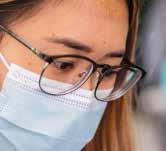


Researchers from the UK’s Medical Research Council and Engineering and Physical Sciences Research Council have discovered that transplanting hair follicles into mature human scars can help to change fibrotic tissue. Previous research had shown that hair transplants could assist with wound healing, so researchers hypothesized that transplanting growing hair follicles into scar tissue might stimulate scars to change. The researchers conducted experiments in which actively growing hair follicles were transplanted into scar tissue. After just six months, they discovered that the number of cells in the scar had doubled, and that the number of blood vessels had reached nearly healthy-skin levels. The findings could pave the way for the development of treatments for a range of other conditions. The study was published in the npj Regenerative Medicine journal.
Hair-Loss Products Market Projected to Reach $31.5 Billion by 2028
The hair-loss products market has taken the world by storm! Already boasting a whopping $23.5 billion valuation in 2021, it is expected to reach $31.5 billion by 2028 according to Insight Partners, a leading research company. While historically male-driven, women are now making their voices heard around postpartum hair loss, alopecia, and even Covid-19-related effects.

Volume 24 No 85 Winter 2022 The Profesional Publication of Hair Replacement & Restoration
TM SOCIAL BEAUTY FASHION MARKETING Did You Know? Leila’s Museum of Hair Celebrating Natural Beauty Forehead Reduction Surgery Pg. 20 Pg. 16 Pg. 31 Pg. 04
Invest in the Future of Hair Restoration with Blockchain
Examining the Impact of Lost Leaders and the Rise of Social Media Influencers
As a journalist with a keen interest in the hair care industry, I have long admired and followed the influential leaders who have built and grown the hair replacement market over the years. However, the loss of so many charismatic personalities in recent times has left me pondering the impact on our industry. The rise of social media influencers, coupled with a changing media landscape, raises important questions about what kind of leadership is needed in the hair loss industry today.
It seems that thoughtful, marketing, and carefully crafted campaigns have been replaced by video snippets where the style and presentation is more important that the message itself. So, men and women experiencing a deeply personal and troubling problem never get to establish personal relationship between themselves and the potential solution provider.
The Pioneers
There’s no doubt that the industry owes a debt of gratitude to the great pioneers of hair replacement, such as the Martin Family, who left Canada to build New Image in sunny Florida, transforming the sector with their innovative products. Similarly, there’s no forgetting the contributions of trailblazers like Andrew Wright, who founded OnRite. Andy’s advertising in what was then The National Hair Journal was slick, humorous, and very effective.
Then there’s Dr Bosley, a made for prime-time physician straight out of central casting. His earnest looks, silver hair and distinguished demeanor built the Bosley empire into a hair restoration network that has never been equaled.
And how could we forget Sy Sperling, the kid from Long Island who bared it all to show the world that he suffered from thinning hair just like everyone else – and by doing so created the biggest hair loss franchise in America.

Certainly, there were businesses like Jon Renau, Hair Art and American Hairlines that let their products speak for themselves, but would we have seen such a dynamic market without these early pioneers and rabble rousers? Who can forget Lance Centofanti, “The Energizer” who seemed to thrive on quantum physics and be everywhere at once? These individuals have shaped the hair loss industry, but the fact remains that fewer and fewer such personalities are emerging today. Should we rely on experienced professionals
steeped in the hair loss industry’s history, or should we now place our bets on outside influencers with fresh perspectives?
The Rise of Social Media
The rise of social media has significantly altered how our culture views leadership. Influencers now play a vital role in shaping public opinion on various treatments and garner unprecedented attention. This trend is a double-edged sword, as social media influencers can disseminate knowledge of hair loss treatments to a wider audience while diluting the professional expertise that industry veterans bring to the table. What’s clear is that the hair loss industry can’t rely solely on influencers to provide that strong hand at the helm. There must be a delicate balance between traditional leadership and innovative approaches, lest we lose sight of the dignity and humanity required when addressing hair loss.
Leading from Within
One perspective is that the leadership reins in the industry should be handed over to experienced hair loss professionals who understand the nuances of the field. These professionals possess in-depth knowledge on the subject matter and have likely witnessed the trials, errors, and successes firsthand. As such, they are more equipped to make informed decisions about the future direction of the industry.
Take, for instance, the International Society of Hair Restoration Surgery (ISHRS) which is governed by a team of experienced hair loss professionals. This organization has made significant contributions to the hair loss community, including setting ethical and practice standards, promoting research and education, and facilitating collaboration among professionals. Without dedicated, knowledgeable professionals like those within the ISHRS, the hair loss industry would not be where it is today.
Outside Influencers and Innovation
On the other hand, some argue that external influence and innovation are crucial for the advancement of the hair loss industry. By tapping into fresh ideas and outside perspectives, the industry can break away from traditional methods and view longstanding challenges through a new lens. For example, companies like HairClone and Follica are combining the expertise of hair loss professionals with stem cell biology and biotechnology to develop innovative treatments. These partnerships, which leverage the knowledge of experts from different fields, are already paving the way for new hair loss solutions.
Moreover, collaborations with external entities can also provide financial and marketing support. Startups like Keeps and Hims have significantly increased public awareness about hair loss treatments by partnering with hair
transplantation clinics and hair loss professionals. Through such collaborations, innovative marketing strategies and the pooling of resources, external influence has played a vital role in driving the industry forward.

The Path Forward
Strong leadership in the hair loss industry demands an approach that is vision-driven, forward-thinking, and open to collaboration. By integrating the expertise of experienced professionals with novel viewpoints and innovations from external sources, the industry can maintain its trajectory of progress and sustainability.



In future issues of Hair Authority, we will introduce you to the new industry leaders and share their insights about the future of hair care, or what I believe will become “hair wellness”.
Best Regards,

















2 Hair Authority Winter 2022 Hair Authority Winter 2022 3
Editorial
CELEBRATING NATURAL BEAUTY
The Power of the Natural Hair Movement
INTRODUCTION TO NATURAL HAIR
Natural hair is a term that encompasses many different types of hair, including curly, coily, kinky, and wavy textures. It has been around since the beginning of modern civilization but has gone in and out of fashion over time. In America, natural hair has had a long history with African Americans often being harassed for wearing their hair. In the midtwentieth century, it was seen as a sign of rebellion against oppressive beauty standards that demanded women have straight hair.
In the 1960s and 70s, natural hair emerged as a symbol of Black pride and empowerment during the civil rights movement. This encouraged more people to embrace their natural texture, wear their hair in its natural state, and find new ways to style it.

In the 21st century, natural hair is now a powerful form of
independence and self-expression. It has become accepted in mainstream culture and is seen on celebrities and models wearing their natural texture proudly. There are countless products available that cater specifically to curly and coily textures. Natural hair has become a way for people to celebrate their natural beauty and express their unique style.
EMBRACE YOUR CURLS AND KINKS
The beauty of natural hair is undeniable. It is unique, versatile, and full of self-expression; plus it looks absolutely gorgeous! Whether you’re rocking your natural curls or going for a sleek look, there are countless ways to style your hair so that it reflects who you are as an individual. Embrace the natural beauty of your hair and never be afraid to show off who you truly are! Natural hair is a statement that celebrates self-love, diversity, and individuality. So go ahead and let your natural hair shine!
TIPS FOR TAKING CARE OF NATURAL HAIR
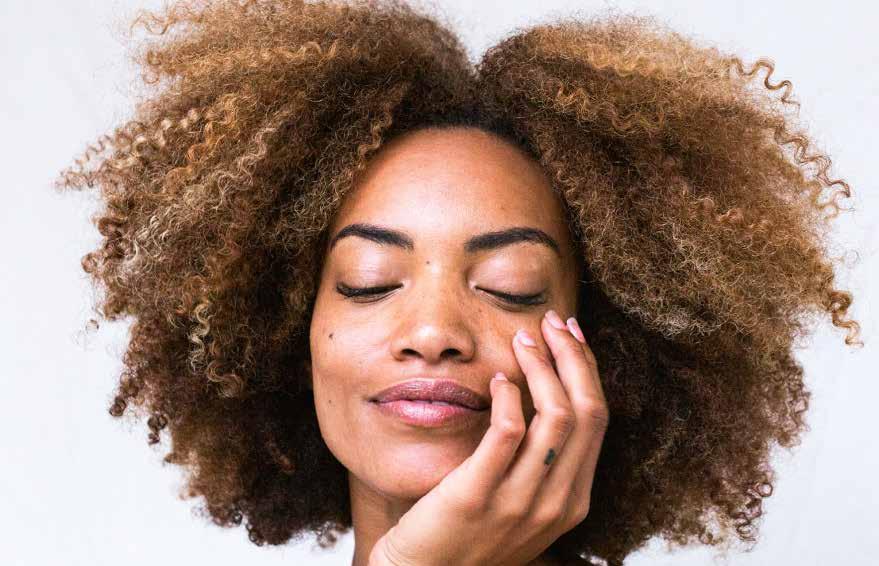
The key to great natural hair is keeping it moisturized and protected from heat damage. Start by using a deep conditioning treatment once a week to keep your strands hydrated. Avoid harsh chemicals and sulfates that can strip your hair of natural oils and protect it from heat damage with the use of a heat protectant. Regular trims are also important to get rid of split ends and maintain healthy growth. Finally, avoid over-styling or using too many products that can dry out your hair.
DAMAGE CAUSED BY BRAIDING HAIR TOO TIGHTLY
Braiding hair too tightly causes a lot of damage to the scalp and hair. It can lead to traction alopecia, which is permanent hair loss due to excessive pulling or strain on the follicles. Tight braids can also lead to scalp irritation, dandruff, tangles, split ends, and breakage.
To avoid damage from braiding your hair too tightly, make sure to keep the tension loose and use wide-tooth combs. If you wear protective styles often, make sure to moisturize regularly and keep the scalp clean by using a gentle cleanser. Invest in quality hair products that are designed for your type of hair and always take your time when styling and detangling.
Finally, consult with a professional hairstylist to ensure you’re taking the best care of your hair. if you are beginning to lose your hair or are concerned about thinning, check out new products like TricoMax Hair Growth Serum that was developed specifically for textured hair. In clinical trials, it outperformed FDA approved drugs Finasteride (Propecia) and Minoxidil. With proper care and maintenance, your natural hair will be healthy and beautiful for years to come.

POPULAR STYLES FOR NATURAL HAIR.

There are endless possibilities when it comes to styling curly hair. No matter the length or texture, there is a style for everyone. For shorter hair, finger coils and two-strand twists are popular options that will give you defined curls with minimal effort. Wash-and-go styles are also great for showing off your natural texture without the need for a lot of styling.
For longer hair, braids and buns are great protective styles that will keep your locks healthy while looking fashionable. You can also opt for a loose curly updo to show off your gorgeous length and make a statement. If you want to go bold, add some color with tapered washand-go curls or try a curly Mohawk.
RECLAIM YOUR IDENTITY
The natural hair movement is a powerful symbol of African American identity and pride. Historically, African Americans have been pressured to conform to Eurocentric beauty standards, leading to the widespread adoption of straightening and chemical treatments to alter their hair texture. Now, keeping natural hair is a way for African Americans to express themselves and celebrate their culture. It is a symbol of self-love, acceptance, and liberation from oppressive beauty standards.
CELEBRATE!
By embracing your natural hair texture, African Americans are standing up for themselves and demanding to be seen for their unique beauty. It is a powerful statement that celebrates African American culture, history, and beauty.
4 Hair Authority Winter 2022 Hair Authority Winter 2022 5
IHA
Don’t Fall Prey to False Promises
The Risks of Hair Transplant Surgery in Turkey
THE INTERNATIONAL HAIR AUTHORITY
The Hair Authority’s mission is to provide hairmanagement professionals from all disciplines with accurate information that will help them provide superior service to their clients and patients. It is a full-color tabloid, published quarterly and distributed worldwide.
EDITOR IN CHIEF
Christopher Webb cwebb@hairauthority.com
CREATIVE DIRECTOR
Vikas Verma vicky1verma@gmail.com
CONTRIBUTING EDITORS
Celestine Gitau, IAT celestinegitau@gmail.com
LEGAL NOTICE
Hans Diks European Editor
When it comes to medical tourism, hair transplantation has become one of the most popular procedures. However, it’s important to understand the risks involved in seeking medical procedures while traveling abroad.

Turkey has positioned itself at the forefront of this industry, claiming to offer state-of-the-art facilities and skilled hair transplant surgeons who can restore hair loss seamlessly. However, with increasing popularity comes an increase in less experienced clinics and surgeons offering subpar results.
While the lower cost of medical services may be tempting, the potential risks involved often outweigh the financial benefits. Patients may be exposed to substandard medical facilities, poorly trained practitioners, and non-compliant hygiene standards which can result in complications and infections that could permanently affect their health.
Don’t be lured by low prices or promises - make sure you choose a clinic that’s right for you and that can deliver the kind of results you’re looking for. It is crucial to carefully consider all your options and research the qualifications of the medical team before deciding to travel abroad.
Hair restoration surgery is a popular cosmetic procedure, and it can dramatically improve your appearance and even your life. But it is also an irreversible procedure, so you only get one chance to get it right!
The views expressed in The International Hair Authority are those of the individual author or contributor and not those of The International Hair Authority, its editors or staff. The Authority’s contents reflect the opinions of the authors and are not analyzed, peer-reviewed or otherwise investigated before publication. All authors and contributors are asked to disclose any interests they have of a commercial nature. The International Hair Authority makes no attempt to validate the sufficiency of such disclosures and makes no warranty, guarantee or other representation, expressed or implied with respect to the accuracy or sufficiency of any information provided. The publication of an advertisement does not constitute on the part of the International Hair Authority a guarantee or endorsement of the quality or value of the representations or claims made by the advertiser. The International Hair Authority accepts no responsibility for unsolicited materials.
All articles and letters become the property of the International Hair Authority and may be edited for clarity, presentations and space. By allowing your articles, interviews and personal commentary to be used in The International Hair Authority, you are giving the publication permission to use these materials in its pages, websites and other information materials. Advertisers are required to sign a formal advertising agreement indicating that they are not violating any trademarks or other intellectual properties. Full details are outlined in The International Hair Authority Media Kit.
COPYRIGHT
The material published in The International Hair Authority is copyrighted and may not be utilized in any form without the written consent of the editor.
THE INTERNATIONAL HAIR AUTHORITY
30659 Lily Pond Ln., Murrieta, CA 92563
Email: info@hairauthority.com
Tel: 626-709-6397
Americans Are More Stressed in 2022
And Their Skin Shows It
By StyleSeat
The news cycle, trouble at work, and even the pressures of everyday life — it can be quite a lot to handle. We recently surveyed over 1,200 Americans about their stress levels and found that 6 in 10 Americans are more stressed than they were last year. Concerns about work, finances, and health are stressing more and more people out — and now they’re looking for solutions.
We discovered the average American has recently spent $260 on stress treatments, from new products to professional
services. To learn more about how people are experiencing and managing stress, we asked about everything from skin to stomach troubles and sleep to vitamin supplements. Read on to find out what stress symptoms Americans are dealing with and how they’re handling them.

Key findings
• A third of Americans report skin problems due to stress.
• Breakouts are the number-one stress-related skin problem.
• Most Americans (85 percent) simplify their beauty
Hair Authority Winter 2022 7
TM
IHA
routines when they’re stressed.
• Easy maintenance is the number-one hairstyling priority.
Stress symptoms affect the whole body
A jam-packed schedule and difficult life events can have major effects on how your body feels, even if other people can’t tell. Of those surveyed, 80 percent of Americans told us they experience changes in energy levels due to stress, and 49 percent reported trouble with digestion.
We asked Americans to tell us which specific invisible stress symptoms they experience — ones that people around don’t
normally notice — and found the most prevalent symptoms are headaches (59 percent), muscle tension (54 percent), muscle fatigue (38 percent) and bloating (25 percent).
Muscle aches and pains tend to affect older Americans more than younger ones. When it comes to older Americans, 52 percent of Baby Boomers and Gen Xers say muscle tension is their worst symptom compared to 40 percent of their younger counterparts.

Stress has a major impact on hair and skin health
When it comes to visible stress side effects — ones that are more obvious to those around you — Americans reported that skin problems were the most common symptoms. Nearly a third (32 percent) of Americans report skin issues due to stress. In addition, 16 percent report hair problems.

Hair Authority Winter 2022 9
The most common, specific visible symptoms of stress are breakouts (31 percent), hair thinning (17 percent), dry skin (14 percent), and dull skin (10 percent). Women are especially prone to breakouts when they’re stressed — 42 percent of women report stress-related breakouts, versus 20 percent of men.
Thanks to increased levels of stress, Americans’ skin woes are getting worse. About a third (32 percent) of Americans report more breakouts this past year. Women are especially prone to increased breakouts, with 40 percent saying they’ve had more in the past year.
It turns out that hair loss is actually on the rise, too: 1 in 5 Americans report more stress-related hair loss this year, and 1 in 5 Americans report more stress-related hair loss in the past year. Just as they’re struggling with more skin problems, women are also losing more hair than they ever have before, with 24 percent of women reporting increased hair loss this year compared to 14 percent of men. Those losing more hair are particularly stressed about their health.
The visible stress side effects that bother Americans the most
We know that stress can manifest in a variety of ways, but which ones bother Americans the most?\ Breakouts, bloating, and hair thinning are the top three complaints. More women (30 percent) than men (18 percent) say breakouts are their worst stress side effects, and more complain about hair thinning, too. Of women, 22 percent say their most bothersome stress symptom is hair thinning versus 12 percent of men.

Many Americans try to manage stress at its source
Whether the symptoms of stress are visible or invisible, many of the solutions work from the inside out. We learned a majority of Americans manage stress through basic lifestyle shifts like more sleep (69 percent), exercise (60 percent), and hydration (53 percent).

Of course, stress management differs from person to person — you have to find what method works for you. Men tend to exercise more (64 percent) than women (55 percent), while women are more likely to change their diets (32 percent vs. 26 percent), drink more water (57 percent vs. 49 percent), and even take targeted vitamins and supplements (40 percent vs. 33 percent).
Some Americans (14 percent) have also tried professional bodywork to relieve their stress. Among those, massage (86 percent), sauna (22 percent), and steaming (14 percent) are the most popular choices, and 89 percent said these kinds of treatments were effective.
Americans simplify beauty routines when stressed
You’ve probably heard the old advice that “less is more” when it comes to caring for upset skin. Most Americans (85 percent) simplify their beauty routines when they’re stressed, opting for fewer or milder products.
The most popular at-home skin treatments for stress are more, or heavier, moisturizer (35 percent), gentle exfoliation (28 percent), and skin-boosting supplements (25 percent).
Depending on where you live, you may have specialized beauty services available nearby. Of those who have sought professional help to soothe stressed skin, 72 percent have had facials, 22 percent have had scrubs, and 20 percent have even had laser treatments. Most of those who have sought professional help (86 percent) say these treatments are effective.
Stressed hair needs TLC, too. Sometimes, fewer washes can help restore some balance on your scalp. A third of Americans shampoo their hair less often when they’re dealing with stress symptoms. Just like hydration helps your body and skin, more moisture can also help hair, too. Just over a quarter (26 percent) of Americans use leave-in conditioner to combat hair stress, and 17 percent use hair oil.
How you cut and style your hair can have a major impact on its overall health and appearance. Of the women we surveyed, 50 percent have gone to get a new hairstyle since salons have reopened after COVID-19 shutdowns. The main reason for new styles these days is easy maintenance (47 percent). When we asked which was more important — ease or trendiness — 95 percent of Americans chose easy maintenance.
Whether you want some help troubleshooting your skin or a new lowkey hairstyle, StyleSeat can make life a little easier and help you find the right beauty professional in your area.
Methodology: We surveyed 1,208 Americans on August 16th, 2022. 49 percent identified as men, 50 percent as women, and 1 percent as nonbinary.
10 Hair Authority Winter 2022 Hair Authority Winter 2022 11
IHA
NYC Dermatologist Launches Revolutionary Anti-Aging Wellness Program


Dr. Russak has launched the first of its kind Anti-Aging Wellness Program in the United States. It is an all-inclusive program that takes a 360° approach to aesthetics and longevity, offering patients clinical data, tools, and treatments to reverse the signs of aging.
The Regenerative Aesthetics Program
Dr. Russak’s Regenerative Aesthetics menu offers therapies such as exosomes, stem-cell facelift technology, platelet-rich plasma (PRP), IV drips, and bio-stimulatory injectables. The program is physician and nutritionist-led, empowering patients to feel their best. Dr. Russak aims to provide patients with a comprehensive treatment plan that focuses on reversing and preventing the aging process.
Dr. Russak and Jennifer Hanway, an In-house Board-Certified Holistic Nutritionist & Celebrity Health Coach, work together to provide patients with personalized treatment plans that focus on reversing and preventing the aging process. These plans are tailored to each patient’s individual needs, as determined by a testing analysis, and include elements such as nutrition, supplements, lifestyle changes and aesthetic treatments.
The Benefits of a Comprehensive Treatment Plan
By understanding how hormonal imbalances, gut health and body composition all affect aging, the program can provide important benefits to those who take part in it. These include slowing down premature aging, having healthier skin and hair, optimizing hormones and metabolism, achieving weight loss goals, increasing lean muscle mass, boosting energy levels and mental clarity.
Integrative Testing and Hormone Balancing
Russak Dermatology Clinic works with leading integrative laboratories, specializing in epigenetic and functional testing including biological age, food intolerance, gut health, micronutrient and hormone panels. “Hormones tell your tissues and organs what to do. A slight imbalance can cause fatigue, anxiety, acne, hair loss, weight change and more. Hormone health is a critical pillar of the program.” -Jennifer Hanway.
Treatments Offered by Russak Dermatology Clinic


While Dr. Russak’s Regenerative Aesthetics program offers a variety of therapies that focus on regenerating the body and
restoring balance, patients can also benefit from clinical-grade skincare and nutraceuticals that help the body to regenerate naturally. Additionally, the clinic has partnered with healthexpert designed organic meal delivery service Daily Dose and integrative supplement brand Nutrafol in order to provide their clients with access to additional resources for wellness. The aim of this program is to offer a unique approach towards restoring balance and optimizing health.
Russak Dermatology Clinic Expansion
The newly expanded Russak aesthetic center will house the AntiAging Wellness Program and regenerative aesthetics offerings and was designed with a focus on empowering patients to unlock their own body’s regenerative power.
About Dr. Julie Russak
- Julie E. Russak, M.D., FAAD., is a Board-Certified Dermatologist and Founder of Russak Dermatology Clinic. Dr. Russak serves as Faculty at Mount Sinai Hospital, where she teaches dermatology residents and medical students. Dr. Russak has distinguished herself in the medical community through her clinical research, scientific presentations, publications, and aesthetic approach. She attends anti-aging, aesthetic, and regenerative medical conferences around the world to incorporate advancements in these fields into her practice. Some notable conferences include the Aesthetic & Anti-Aging Medicine World Congress and the Annual Mount Sinai Winter Symposium “Advances in Medical and Surgical Dermatology”. Dr. Russak is frequently sought out by beauty editors and industry outlets as an expert contributor, including Good Morning America, NewBeauty, Cosmopolitan, Forbes, and Marie Claire. Dr. Russak serves as a consulting Dermatologist and formulator to clean skincare brand, Covey.
12 Hair Authority Winter 2022 DYNASTY MARLOWE Artfully designed full wigs made with soft, silky, 100% ethically sourced hair make any look possible. Your clients and your talents will know no boundaries. BEFORE WHEN ONLY THE BEST WILL DO EASTERN EUROPEAN REMY HUMAN HAIR COLLECTION BY AMERICAN HAIRLINES VIRTUAL CERTIFICATIONS BOOKING NOW! | HAIRUWEAR.COM/AMERICAN-HAIRLINES | 888-766-6832 ©2022 HairUWear Inc.
IHA
There’s More to Cannabis Than THC & CBD

DISCOVER THE HEALTH BENEFITS OF THE LESSER-KNOWN CANNABINOIDS, THCV AND CBDV
A case study conducted in 2021 found that using a CBD-rich hemp extract resulted in an average increase of 93.5% in hair regrowth. Hemp extract works on the Endocannabinoid System (ECS) present in the body and has been shown to stimulate hair follicle elongation and hair matrix keratinocyte activation through ECS receptors associated with hair follicles. This suggests that hemp extract may be an effective, safe, and inexpensive non-prescription topical AGA therapy that complements the effects of minoxidil, finasteride and antiandrogen therapies.
Discovering the Secrets of Cannabis: Unveiling the Benefits of THCV & CBDV.
CBD is a natural cannabinoid found in the hemp plant and does not contain THC, which makes it safe to use. It has been studied extensively for its potential health benefits and therapeutic properties. CBD has been shown to have anti-inflammatory, anti-anxiety, antipsychotic, and antispasmodic effects that may help ease a wide range of medical conditions. It is widely used as an alternative to traditional medications and can help reduce pain, anxiety, depression, insomnia, hair
loss and other common ailments. CBD is safe to use without any major side effects and can improve lives in many ways.
The Therapeutic Benefits of Varins
Cannabinoids are compounds found in the cannabis plant that have garnered attention in recent years for their potential health benefits. While THC and CBD are the most wellknown cannabinoids, there are others that are gaining interest from the scientific and medical communities, including THCV and CBDV, collectively referred to as the varins.
While not as extensively researched as THC and CBD due to the lack of available hemp extracts containing significant amounts of varins, initial studies have shown promising results for their potential health benefits.
Some Of the Ways THCV and CBDV Could Positively Impact Health
Epilepsy: THCV has shown promise in reducing seizures in people with epilepsy. A study published in the British Journal of Pharmacology found that THCV reduced both the frequency and severity of seizures in mice with epilepsy. A human clinical trial is currently underway to explore the effects of THCV on epilepsy in adults.
Obesity: One study found that THCV may help regulate appetite and reduce body weight. The study, published in Diabetes Care, showed that participants who received THCV lost more weight and had lower fasting insulin levels than those who received a placebo.
Diabetes Mellitus: CBDV has been found to improve glucose
tolerance and reduce blood sugar levels in animal studies. A study published in the journal Nutrition and Diabetes showed that CBDV reduced insulin resistance in mice with type 2 diabetes.
Neuroprotection: Both THCV and CBDV have shown neuroprotective properties in animal studies. THCV has been shown to protect against neuronal degeneration in mouse models of Parkinson’s disease, while CBDV has been found to protect against brain damage caused by seizures.
Anti-Inflammatory: Both varins possess anti-inflammatory properties that could prove useful in the treatment of various conditions, such as even hair loss, rheumatoid arthritis, Crohn’s disease, and multiple sclerosis.
In Conclusion, Cannabinoids are proving to be an important health breakthrough, with extensive scientific research being done on the potential medical benefits of both THC and CBD as well as their lesser-known counterparts, THCV and CBDV. With promising results in areas such as epilepsy, obesity, diabetes mellitus, hair loss and neuroprotection, it is becoming increasingly clear that Cannabinoids are more than just a fad or marketing gimmick, but instead have the potential to profoundly improve lives and give people access to much-needed relief from many ailments. The future of Cannabinoids looks very promising indeed.
Niostem Aims to Revolutionize Hair Loss Treatment with Stem Cell Regeneration Device
A new technology from the company Niostem promises to transform the way individuals fight against hair loss. Unveiling their innovative device that harnesses the power of cell regeneration, Niostem aims to help users regain a healthy head of hair without resorting to any invasive procedures or medications.

Niostem’s device focuses on revitalizing stem cells in the scalp, which are responsible for hair growth. By increasing the body’s regenerative abilities, the non-invasive device efficiently tackles hair loss at its source. The result is a user-friendly strategy that stimulates follicle growth and restores hair health – all accomplished by simply wearing the device on the head for a mere 30 minutes each day.
The underlying technology responsible for the device’s effectiveness is bioelectrical stimulation, which triggers the reactivation of dormant hair stem cells. Once these cells become active, they naturally boost the follicle growth process, leading to healthier and thicker hair growth. With no need for pharmaceutical intervention, Niostem’s approach is a departure from the traditional reliance on chemical-based treatments or surgical transplants.
In a world where hair loss affects millions of people and often leads to confidence and self-esteem issues, Niostem’s innovative solution promises hope and a convenient alternative to invasive procedures or long-term medication courses. Furthermore, the device’s non-invasive nature could make it accessible to a broader range of users, including those who might shy away from surgical or pharmaceutical options due to health concerns or personal preferences.
The device is being made available through an Indiegogo campaign. As Niostem prepares for the official launch of their revolutionary device, it not only marks a promising development for those affected by hair loss but also serves as a testament to the broader potential of stem cell technology. The company’s unique approach may well pave the way for further advancements in repairing and regenerating other tissues and organs, which could have a profound impact on healthcare and the medical field.
While it remains to be seen how broadly the device will be adopted by the public, Niostem’s innovative creation stands to make a significant mark on the hair loss industry, with the potential to improve the lives of countless individuals both physically and psychologically. And as stem cell research continues to expand, so too does the potential for even more fascinating medical breakthroughs and life-changing discoveries.
14 Hair Authority Winter 2022 Hair Authority Winter 2022 15
IHA IHA
KNOW? YOU DID

Unleashing the Power of Peppermint Oil
for medicinal purposes to soothe digestive problems and headaches and to improve mental clarity. It is also known for its antiseptic, antifungal and anti-inflammatory properties. Recent studies have suggested that it also may be helpful in promoting hair growth. It is thought to do this by stimulating blood circulation to the scalp and increasing follicle size.
The Hair Color That’s Going Extinct
Redheads comprise just 1% to 2% of the global population. It is believed that the gene mutation responsible for red hair may eventually be eradicated due to genetic dilution. [] (https://www.ncbi.nlm.nih.gov/pmc/articles/PMC5435520/)
Hair Can Preserve Ancient Human Secrets Hair found at archaeological sites often reveals valuable information about ancient civilizations, including diet and lifestyle. In some cases, hair samples can even provide insight into the genome of extinct human species. [](https://www. nature.com/articles/srep22136)
Hair Grows Much Faster Than You Think
Did you know that your hair grows roughly 15 centimeters (6 inches) per year? Faster than a slimy snail. Human hair typically grows around 1.25 centimeters (0.5 inches) every month, making it one of the fastest growing parts of the human body. [](https://www.sciencedirect.com/science/article/ pii/S0079612304630391)
There’s a Rare Hair Growth Disorder: “Werewolf Syndrome” Known as hypertrichosis, “werewolf syndrome” is characterized by excessive hair growth all over the body. The rare genetic disorder can affect individuals from birth, and there is no cure to date. [](https://www.ncbi.nlm.nih.gov/pmc/articles/PMC4574907/)
Hair Can Detect Drug Use
Chemicals from drugs can be absorbed in the hair, making it
possible for hair drug tests to detect past usage. In fact, some hair drug tests can trace consumption from up to 90 days earlier. [](https://www.sciencedirect.com/science/article/pii/ S0379073819300069)
Blondes Have More Hair Follicles
Surprisingly, natural blondes have more hair follicles than those with darker locks. While blondes typically have around 150,000 follicles, those with black or brown hair usually have around 100,000 follicles. [](https://www.ncbi.nlm.nih.gov/ pmc/articles/PMC1885390/)
Locks of Love: Hair as a Historical and Cultural Treasure Throughout history and in various cultures, hair has been a powerful symbol. For example, the ancient Egyptians prized hair as a valuable resource and often wore wigs, while the Victorians created mourning jewelry made from deceased loved ones’ hair. [](https://www.jstor.org/stable/30192021)
Why Hair Turns Gray

A natural decrease in melanin production causes hair to turn gray. Certain factors can expedite the graying process, such as genetics, stress, and an imbalanced diet. [](https://pubmed. ncbi.nlm.nih.gov/3196531/)
The Curious Connection Between Hair and Goosebumps
The arrector pili muscle controls both hair and goosebumps. When you experience a sensation that causes goosebumps, this same muscle responds by making your hairs stand up. [] (https://pubmed.ncbi.nlm.nih.gov/3229690/)
A 2014 study investigated hair growth in mice using 3% peppermint oil compared to 3% minoxidil and jojoba oil. The results showed that peppermint oil (40% menthol)
“showed the most prominent hair growth effects; a significant increase in dermal thickness, follicle number, and follicle depth.” The researchers suggested that peppermint oil induces a rapid anagen stage.
Peppermint oil is an essential oil derived from the perennial plant, Mentha piperita. It has a strong minty aroma and flavor, which comes from its main active ingredient: menthol. Peppermint oil has traditionally been used

Furthermore, its strong aroma can help reduce stress and boost mental clarity and reduce stress levels, which are both known triggers for hair loss. Additionally, peppermint oil contains several other compounds such as limonene, menthone and caryophyllene which may also help promote circulation and stimulate the scalp. Thus, peppermint oil has the potential to act both directly on the scalp and indirectly through its calming effect on stress hormones.
TricoMax Hair Serum contains a unique blend of clinically proven ingredients, such as peppermint oil, green tea extract, and biotin. This formula helps to stimulate blood circulation in the scalp which encourages healthier follicles for thicker hair. The inclusion of peppermint oil is only one of the key components in this clinically tested product.

16 Hair Authority Winter 2022 Hair Authority Winter 2022 17
IHA IHA
With over 800 artistic and talented stylists and hair health professionals in more than 120 state-of-the-art centers throughout the United States, Canada, and Puerto Rico, Hair Club is second-tonone in quality, experience, customer service, innovative technology, and delivery of Total Hair Solutions.
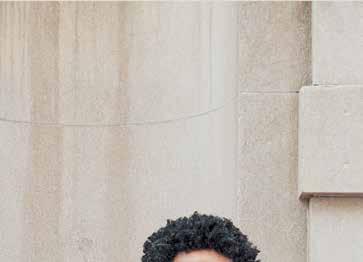
From programs like HairClub for Kids, providing complimentary services for kids to complimentary services for veterans, firstresponders and Seniors, HairClub is transforming lives while serving our communities.
Join us, as now is a great time to partner with us and launch a new HairClub franchise. Becoming a franchisee is a rewarding opportunity to make a difference, both in the lives of HairClub members and your own.





Whether you want to work with us, open your own franchise, or just learn more about HairClub, let’s talk. Visit hairclub.com or call 800.594.7074




.


Love your hair. Live your life.™

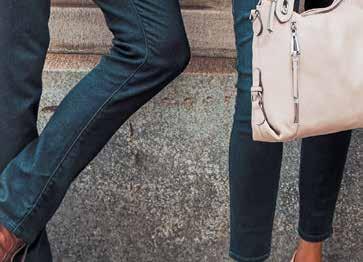



18 Hair Authority Winter 2022 Hair Authority Winter 2022 19
setting the standard in hair regrowth, replacement, and restoration for over 45
years.
Franchise Opportunities hairclubfranchise.com | 800.259.8788
Get Ready to Through History! Twist Curl and Braid
EXPLORE THE HISTORY OF HAIR AT LEILA’S MUSEUM OF HAIR
Leila Cohoon is the proud owner of the Museum of Hair, a unique and fascinating museum located in Independence, Mo. More than 400+ wreaths and 2,000 pieces of hairwork jewelry – including rings, necklaces, bracelets, brooches, watch chains, hair pins and hat pins are on display.


such as Abraham Lincoln’s, Marilyn Monroe’s, Elvis Presley’s, and Ronald Reagan’s. These strands of history offer an insight into what their style and tastes were like during their time and how they shaped popular culture.
Whether it’s to marvel over the hair of a starlet or pay homage to a past president, the Museum of Hair is an amazing place to explore one of mankind’s oldest expressions - hair.
THE IMPORTANCE OF HAIR AROUND THE WORLD
In African culture, hair is often seen as a way to express one’s identity and honor your ancestors. Braids, extensions, and wigs are all popular hairstyles that have been used for centuries to show status, wealth, and beauty.
In Japan, elaborate haircuts and styles are used to express a person’s individuality and style. Hair is also used in a variety of religious ceremonies, as well as special occasions like weddings or funerals, to signify important milestones in life.

HAIR IN INDIAN CULTURE

Hair is of great importance in Indian culture. It has cultural and religious significance, as well as a strong symbolic meaning. Many Hindus regard hair as a sign of strength, power and respectability. Wearing long hair is viewed as an expression of pride and self-confidence. A woman wearing long braids would be seen as having wisdom and knowledge of the world, while shorter hairstyles are seen as more conservative and modest. Someone sporting shorter locks could be viewed as being more contented or peaceful.
Hair is also used to signify important occasions such as weddings or religious ceremonies, where intricate braids and updos are worn as a sign of respect. Hair is also used in many traditional Indian healing practices to help restore balance and harmony within the body.
LOOKING FOR A DIFFERENT KIND OF INVESTMENT?
Visitors can explore an array of artwork made from human hair rooted in cultures around the world. Through a series of engaging presentations, videos, and interactive displays, Leila strives to educate visitors about the intricate art form that is hairdressing as well as its various expressions.
THE DIFFERENT TYPES OF HAIR ON DISPLAY
The Museum features hair from many different cultures, including African braids and beaded extensions. Guests can explore the history of plaiting in Africa, the ornamental use of hair in Europe, and the elaborate styles of Japan. They can also discover a variety of unique accessories such as headdresses and decorative combs from different countries.
A GLIMPSE INTO THE WORLD OF CELEBRITY HAIR
Guests can marvel at an array of wigs and accessories worn by some of the biggest names in entertainment. From Beyoncé’s bejeweled headpieces to Rihanna’s bold braid styles visitors can get up close and personal with locks that have defined these stars’ looks.
The Museum also features a collection of hair from some of the most iconic figures in history. Visitors can explore locks
Hair has long been a valuable commodity, with strands of famous figures often selling for high prices at auctions. In 2018, the locks of John Lennon were sold at an auction in Dallas for $35,000 USD. The four-inch strand was cut by a hairdresser in 1966 and kept as a memento ever since.

In 2003, a US auction house sold the hair of Marie Antoinette for $24,000 USD. The strands were cut off her head during her imprisonment in 1793 and kept as a relic. In 2012, another strand of the former Queen was sold at an Austrian auction house for over $50,000 USD.

Locks of hair from great figures like Abraham Lincoln and Napoleon Bonaparte have also been sold for large amounts. In 2009, a lock of Lincoln’s hair was purchased by an anonymous buyer for $25,000 USD. And in 2013, the strand of Napoleon’s hair was bought for $17,500 USD at an auction in the United States.

Hair Authority Winter 2022 21
IHA
Boosting Customer Loyalty During Recessionary Times
Why You Should Invest in Advertising During Downturns

In uncertain economic times, customer loyalty is the greatest asset for small and medium-sized businesses (SMB’s). Maintaining a strong and ongoing relationship with customers is essential to retain their support - something companies that scale back on marketing risk losing out on. With research showing that increasing voice share in the marketplace leads directly to more profits, investing in customer outreach should remain top of mind for any business looking to succeed during downturns
Recession fears often drive SMBs to dramatically reduce their budgets. Spending cuts may keep companies afloat, but cutbacks need to be strategic. Scaling back business operations that drive sales, such as marketing, leaves businesses vulnerable to recession-driven earnings losses. Holding steady on marketing and eCommerce solutions may help a company come out of a recession stronger than before.
The Harvard Business Review conducted a year-long study of 4,700 publicly traded businesses during three different global recessions: 1980, 1990, and 2000. The results were quite revealing, with 17% of companies not surviving and 80% still catching up to their pre-recession status three years after the economy bounced back.
However, 9% of SMB’s performed better than they did before a recession. These were the businesses that maintained or increased their advertising. According to Forbes, “An increase in ‘share of voice’ typically leads to an increase in ‘share of market.’ An increase in market share results in an increase in profits.” When merchants cut back on ad marketing, a brand diminishes its share of mind with consumers, which could lead to the loss of current and future sales.
THE NEED FOR A CERTIFYING BOARD IN HAIR RESTORATION SURGERY AND NONSURGICAL HAIR REPLACEMENT

Pharmaceutical Compounding Site - Amwiner Raphe Pharmaceutique Laboratories




In 1995 at the Hair Replacement Surgery Seminar, the president of the international Hair Loss Council, began discussing the need for a certifying board in both surgical (hair restoration surgery) and nonsurgical hair replacement (hair attachment and hair systems). Around this time, the Federal Trade Commission began reviewing cosmetic claims regarding surgical and nonsurgical hair restoration. With the realization that if professionals did not police their profession that the government would interfere and mandate onerous rules and restrictions, the decision was made to present a detailed plan for forming two boards: one for surgeons performing hair transplantation and the other for nonsurgical hair replacement technicians.
The product lines were born out of several treatments conducted by the International Association of Hair Transplant Surgery Organizations and the Board of Hair Restoration Surgery physicians on patients and were found to be effective and 60% equivalent to surgical intervention.
Because not all hair loss is caused by DHT over-production, the board created these products differently from traditional basic minoxidil solutions. The goal is to keep patients healthier and off medication in the shortest possible time, by birthing a pathway of broad-spectrum hair loss treatment that would cover all likely causes of hair loss. Using Minoxi-
dil alone is not a solution to hair loss, because when discontinued, the hair loss continues. This would mean lifetime dependence on treatment to keep the hair, hence these product formulas were combined with another active ingredient that treats other causes of hair loss present in 70% women such as-inflammatory scalp and scarring Cicatricial alopecia, follicular degeneration syndrome, and clogged pores.
They advised consumers to Look for Minoxidil products that contain other ingredients such as: Pyrithione Zinc, Selenium Sulfide, Ketoconazole, Fluocinolone, Melatonin, Saw Palmetto, Biotin, Finasteride (for men only) and Caffeine.
22 Hair Authority Winter 2022 Hair Authority Winter 2022 23
IHA
In June 1996, the organizational meeting for a hair replacement surgery certification examination was held at New York. At the culmination of this meeting, the International Board of Hair Restoration Surgery was created. Each of the societies represented at this meeting agreed that their organization would accept and recognize this board as the only board certification focusing strictly on hair restoration surgery.
The plans for surgical hair restoration and nonsurgical hair replacement were submitted to the board of directors of the AHLC. The board accepted the proposal and offered to sponsor an organizational meeting with the leaders in the field of hair restoration surgery. The board did not accept the proposal for a nonsurgical hair replacement certification at the time since they believed such an endeavor would be too divisive and exclusionary for their members. But after series of impressive results from these non-surgical interventions, approval was granted and submitted to the federal regulatory authorities for approval.
With the financial backing of the AHLC, invitation letters were sent to the presidents of all the physician organizations whose members perform hair restoration surgery: the International Society for Hair Restoration Surgery (ISHRS), the World Association for Hair Restoration Surgery (WAHRS), the American Academy of Facial Plastic & Reconstructive Surgery (AAFPRS), the American Academy of Cosmetic Surgery (AACS), and the American Hair Loss Council (AHLC). Each organization or society was asked to discuss the format, logistics, and financial commitment to form a certifying board in hair restoration surgery to fund non-surgical treatment line.
Finding a suitable laboratory with the necessary infrastructure, knowledge, and skills in pharmaceutical sciences was the next challenge the committee encountered. After visiting dozens of laboratories in the United States and Canada, they concluded AmWiner Raphe Pharmaceutique laboratories in Dallas, Texas, would be the laboratory home for these product lines. AmWiner, being the southeast vendor for Johnson and Johnson, gave them more confidence, as did the recognition of Perrigo. The expertise of their compounding pharmacists and chemists also helped them make the top on the list for manufacturing of these science base hair loss treatments. In 2008, the board formed a joint ownership with AmWiner Raphe Pharmaceutique laboratories.
Science + Aesthetics

PROVEN NON-SURGICAL SOLUTIONS
FOR THINNING HAIR


Science meets aesthetics to give your patients something new: a complete system that targets thinning hair inside and out. While clinically proven ViviscalTM PRO Supplements promote existing hair growth in 6 months, XFusionTM by ToppikTM Keratin Hair Fibers conceal thinning hair instantly. Together, they o er the perfect complement to your hair loss treatments and procedures, giving patients the short-term and long-term solutions that they need to fight the e ects of hair loss and boost their confidence.*
XFusionTM by ToppikTM
Keratin Hair Fibers
• Instant Transformation
• Decades of Loyal Users
• Confidence Booster
These non-surgical hair loss product treatments have been tested by all the organizations and are now widely used, mainly at medical offices treating hair loss surgically and non-surgical studios. The plan is to offer them as private label to clinician and medical practitioners with 3% of sale profit donated back to the organization for continual research on hair loss.
The manufacturing site in Dallas Texas manufactures about 4.5M tablets and capsules and 850k bottles of liquid hair loss treatment solutions monthly, supporting millions of patients all over the world. The site offers expertise in oral solid and liquid product development, flexible volume manufacturing, leading packaging technologies, and global delivery. Dallas stands out as one of their most future-oriented and digitally enabled pharmaceutical production sites with industry 4.0 digital processes and state of art technologies, computer integrated manufacturing and fully automated process and material flow.
Raphe Pharmaceutique Laboratoires LLC is a DBA of AmWiner & Raphe Holdings, jointly owned and operated by the members of the Board of Hair restoration Surgery and International Association of Hair Restoration Surgery. Their products are sold under company`s brands custom manufactured. They private label a large range of dermatological products for the effective management of acne, pigmentations, and hair loss.
ViviscalTM PRO Supplements

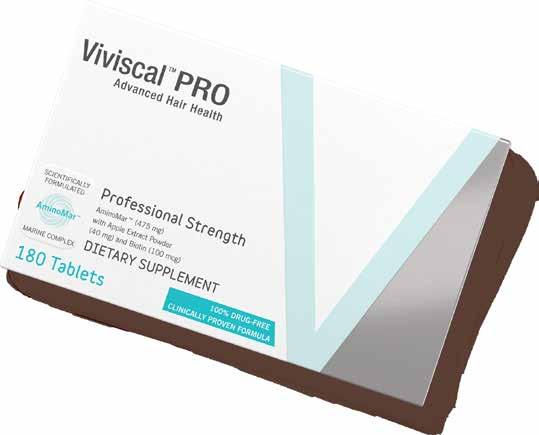


• Over 25 Years & 10 Published Trials
• Clinically Proven
24 Hair Authority Winter 2022 Customer Ser vice (800) VIVISC ALPROFE S SIONA XFUSION HAIR .COM Ma e al o Chu ch & D w g ht C o n c , h e make s o V iv s c a ™ an d X Fus o n™ by To pp k™ C op y g h © 2 019 Chu ch & D w g h t C o , n c A g h s r e s e ve d * These statements have not been evaluated by the Food and Drug Administration. This product is not intended to diagnose, treat, cure or prevent any disease.
IHA





















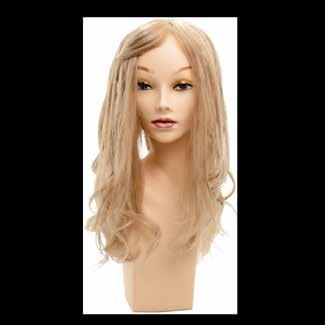
p41l innovates with introduction of Superhairpieces NEW MEN’S AND WOMEN’S STOCK HAIRPIECES Superhairpieces.com | 1.866.814.7879 (Toll Free) Superhairpieces will only continue to keep introducing new innovative products and features so that our retail and salon clients only get the best quality hairpieces and have their ever-changing needs fulfilled. “Superhairpieces not only ensures that their clients receive their much-needed hairpieces on time, with quality assurance, but we also listen to our clients and continuously strive to meet their current and future needs.” Open the camera app & Scan it TARA GERHART Superhairpieces store manager P6814BSC/P6814/P6814HP P6818BSC/P6818/P6818HP P7914BSC/P7918/P7918BSC HD106XL euro series sw6814 Mono topper series lw7914 PW106HD new product Overview! Wide sideburns Front Machine weft the rest makes the hairpiece stronger, helps reduce shedding issue. Model is wearing EUDia
Self-Inflicted Hair Loss
Traction alopecia is a type of hair loss caused by prolonged tension from hairstyles such as tight ponytails, cornrows, and braids. It can affect any part of the scalp but usually affects the edges or temples. While it’s not uncommon to experience some temporary hair loss due to styling, traction alopecia is a result of prolonged traction and can lead to permanent hair loss if not treated.
Traction alopecia is unique in that it is caused not by genetics or age but rather by the long-term traction or pulling on hair follicles due to certain hairstyles. While male pattern baldness and female pattern baldness are both genetic conditions, traction alopecia can be avoided in most cases with proper care of the hair.
Who is Most Affected
In the United States, traction alopecia affects an estimated 2.5 million people each year. Early diagnosis and treatment
Understanding Alopecia: Traction
Who is Most at Risk?
the hair too tight on a frequent basis. This includes wearing overly tight hairstyles, such as ponytails and cornrows, using hair extensions or weaves, tightly wrapping hair in rollers overnight, and wearing tight hats all day long.

People who wear extensions and weaves are also at risk of developing traction alopecia if the hair is not properly cared for and maintained. If a tight hairstyle is worn, it’s important to take breaks between wearing them choosing loose styling techniques to minimize tension on the scalp, as well as using gentle products and taking extra care when brushing, shampooing, or styling the hair.
Wet is Extra Risky
When styling wet hair, it is important to be gentle and avoid pulling or stretching as it is more fragile and elastic than dry hair, making it more prone to damage.


can significantly reduce long-term effects, so it is important to seek medical advice right away.
Traction alopecia affects people of all ages and backgrounds, but some groups are more vulnerable to the condition than others. People with naturally curly or textured hair are at higher risk of traction alopecia due to their hair’s tendency to break more easily.
According to the American Academy of Dermatology, traction alopecia is most commonly seen in African women compared to other ethnicities and genders since they often wear their hair in tight braids or ponytails.



Additionally, a 2018 survey conducted by the British Dermatological Nursing Group found that one-third of all women experience some form of hair loss due to styling, with traction alopecia being the most common form.
What Causes Traction Alopecia?
Traction alopecia is caused by activities that involve pulling
Studies have found that wet hair can stretch up to 30% more than dry hair before breaking, but if it is braided when wet and then contracts as it dries, it will exert excessive pressure of the hair follicle.
Remember also, that wet hair has a higher pH level and is more vulnerable to breakage due to the cuticle surface being raised. To prevent damage when styling wet hair, use wide toothed combs or brushes and avoid aggressive brushing.
The Symptoms
Traction alopecia can be difficult to diagnose, as many of its symptoms are shared with other diseases and conditions. Some of the most common signs of traction alopecia include:
• Thinning hair in areas prone to traction such as the temples, sides, and back of the scalp
• Soreness, redness, and inflammation of the scalp.
• Inflammation Of the Hair Follicles, Known as Folliculitis
• Small bumps or blisters on the scalp that can be filled with pus.
• Itching or flaking in affected areas.
• Hair breakage around the hairline or other parts of the scalp.
Tips for preventing traction alopecia:
1. Avoid tight braids, ponytails, weaves, buns, and other hairstyles that pull on the scalp.

2. Take breaks between styling to give the scalp a break.
3. Choose hairstyles that don’t cause tension on the scalp, such as loose buns or braids.
28 Hair Authority Winter 2022 Hair Authority Winter 2022 29
4. Use gentle products when shampooing and conditioning hair.
5. Avoid using heat tools like curling irons and blow dryers on a regular basis.
6. Use a wide-toothed comb when brushing and styling hair.
7. Visit a dermatologist or trichologist for treatment if you experience prolonged traction alopecia.
Prevention - The Best Remedy
Overall, traction alopecia is a serious condition that can cause long-term hair loss if not treated properly.
If you experience any of these symptoms, it is important to seek medical advice as soon as possible.
the Benefits and Risks of Forehead-

Reduction Surgery
Stay informed – Subscribe to The Hair Authority

Business Name: ________________________________________________________________ Address: ______________________________________________________________
City: ___________________________ State: ________Zip: __________
Ph: ( ) _____- ______ Fax:( ) _____ - ________
Email: ______________________________ The International Hair Authority 30659 Lily Pond Lane Murrieta, CA 92563
Forehead-reduction surgery, also known as a forehead lift, is a procedure that has gained popularity recently, thanks to social media platforms like TikTok where before-and-after pictures of surgeries and stories of rapid recoveries have been circulating.
According to the American Society of Plastic Surgeons (ASPS), forehead lifts saw a 22% increase in popularity from 2019 to 2020. This procedure is particularly popular among women over 50 years of age.
Hair loss is the main reason patients opt for this surgery. Patients with naturally thin hair, or who experience hair loss as they age, often choose to undergo forehead reduction surgery to lower their hairline and achieve the appearance of better hair density.
Natalie Attenello, MD, a facial plastic surgeon and hair restoration specialist, offers insights into the surgery for hair thinning: “Some patients have naturally thin hair, which creates the illusion of aging as it implies a form of hair loss, so many patients do the surgery to remove the natural, thin hair and lower the better-density hairline. Since hair tends to be thicker farther back on the scalp than at the hairline, this
surgery pulls it toward the front.”
The surgery involves making small incisions in the hairline, after which the scalp is pulled down to cover the forehead. This can result in a more youthful appearance. Recovery times may vary based on individual factors, but many patients report that recovery periods are relatively short and easy to manage.
While forehead-reduction surgery is a relatively new procedure, it is steadily gaining popularity. Personal stories of success and the proliferation of information on social media have made people more aware of the procedure and its benefits.
As with any surgery, there are potential risks and complications. These may include scarring, nerve damage, and infection. However, when performed by a qualified and experienced surgeon, the procedure is generally safe and produces successful results.
If you’re considering this procedure for yourself, be sure to do thorough research and speak to a qualified medical professional to determine if it’s the right choice for you.
30 Hair Authority Winter 2022 Hair Authority Winter 2022 31
Early intervention can significantly reduce the long-term effects of traction alopecia and protect your scalp and encourage healthy hair growth.
vital industry news delivered to your doorstep. Don’t miss an issue, subscribe today.
: subs@hairauthority.com and tell us how to contact you…
cut out and return this form to the address below:
Get
Email
Call 626-709-6397 Or
Online: Go to https://hairauthority.com/subscription-section/ ========================================================================= Please bill me for my subscription to The International Hair Authority: Subscriber’s Name: ________________________________________
IHA IHA
Wigs for Kids launches Cut-A-Thon

Wigs for Kids is launching A Hair Raising Experience, a CutA-Thon project. Beginning June 1 and ending on September 17, we are seeking stylists, salons, organizations, and schools to host Cut-A-Thons.

Wigs for Kids relies on the generosity of hair donors to donate their hair. It takes between 25 to 30 ponytails to make one wig for a child. Cut-A-Thons are fun and uplifting events, bringing smiles and joy to everyone involved.
Wigs for Kids has a Cut-A-Thon Toolkit that includes stepby-step directions on how to host a successful event along with a Toolkit that is sent to the organizers.
On September 16 Wigs for Kids is hosting a Cut-A-Thon at the Westlake Safety & Wellness Day at the Westlake Recreation Center, Westlake, OH from 10 AM - 1 PM. If you live in the Greater Cleveland and surrounding areas and are interested in donating your hair - join us for the Cut-AThon. To learn about hair donation requirements, please visit DONATE MY HAIR.
Ready to Donate Your Hair?
Start by following the 3 simple steps below. Then fill out your Hair Donation form.
1. Start Your Donation with Hair Length

If you’re interested in donating your hair to kids in need, your first step is to set a length goal. While we accept hair donations of 12 inches or longer, we encourage you to donate 14+ inches of hair; the more length you can donate, the more of an impact you will make.
2. Get in Contact with a Hair Professional

We rely on talented hair professionals to properly cut the hair ponytails and braids that are then donated to Wigs for Kids. The professional you contact must follow these steps for cutting and donating your hair or ponytail. If you must use a salon outside of our locations, please read our detailed instructions here. You can find an excellent Hair Donation Specialist by clicking the “Find a Specialist” button below.
3. Send in Your Hair Donation
Place the dry ponytail in a sealed Ziploc bag and then inside a sealed envelope addressed to:
Wigs For Kids — Hair Donations
24231 Center Ridge Road
Westlake, Ohio 44145

32 Hair Authority Winter 2022
IHA
Major Concern for Social Media Users

Inadequate Professional Engagement
To better understand the low level of professional engagement on these platforms, HairToStay examined the top 10 hair-loss related social media hashtags on Instagram and TikTok. Their data was collected from December 2020 through the end of January 2021. The top hashtags included: #hair, #haircare, #hairloss, #wigs, #hairlosstreatment, #hairgrowth, #alopecia, #hairtransplant, and #thinninghair. Posts not in English and duplicates were excluded from the analysis.
Instagram Posts on Hair Loss Dominated by
non-medical influencers accounted for 70%. Again, the most popular post in each of the 10 hashtags analyzed was created by an influencer (50%), hair care business (30%) or professional wig manufacturer (20%).
A similar study published in The British Journal of Dermatology found that 55% of Instagram posts about hair loss were created by nonmedical influencers. This lack of professional contributions to hair loss-related content on social media is concerning, given the potentially consequences of misinformed advice.
Empowering Individuals Seeking Answers to Their Personal Care Journeys
TikTok and Instagram have become an invaluable source of knowledge for people seeking advice on personal care topics. Over 2 billion users around the world visit social media platforms every month, with an average of 60 million posts being shared daily. However, despite the sheer number of people looking for answers to their hair loss concerns, posts about hair loss represented only 1% of all personal care-related posts on TikTok in 2020 according to data from Statista
The overwhelming majority of popular hair loss-related content on Instagram and TikTok is made by individuals with no medical or dermatologic training.

Professional Hair Loss Contributions on Social Media
Hair loss affects millions of people around the world, with an estimated 80 million men and women in the United States alone experiencing varying degrees of alopecia. But while there is a wealth of gossip on social media platforms such as TikTok, surprisingly few professionals are contributing to the conversation.
This lack of professional contributions on social media is concerning, given the potential consequences of misinformed advice.
A study published in JAMA Dermatology found that only 10% of TikTok posts about hair loss were created by medical professionals, while a separate analysis conducted by HairTo-

Stay revealed an even smaller proportion (4%) of professional contributions.
The British Journal of Dermatology reported that 55% of Instagram posts related to hair loss were created by nonmedical influencers.
Non-Medical Influencers
There were more than 241 million Instagram related to hair loss in the top 10 hair-loss related hashtags. Medical professionals created 4%. Nonmedical professional influencers created 66%, and hair and wig companies created 29%. The “most liked” post for each hashtag was created by an influencer (50%), hair care business (40%), or professional wig manufacturing company (10%). Among the posts created by medical professionals, all were in the #hairtransplant category.
TikTok Posts Reveal Lack of Hair Loss Professionals
When it comes to TikTok, the study found that there was an equally small number of professionals contributing to conversations about hair loss. Out of the 100 posts analyzed, only 4% were created by medical professionals. Hair care businesses and wig companies created 26%, while

The Consequences of Misinformed Advice
This lack of professional engagement is a major concern that needs to be addressed, as individuals may consume misinformed advice or make misguided decisions when consulting the internet for hair loss solutions.
To ensure that people get the reliable information they deserve, more experts need to come forward and contribute responsible content to these platforms. Only then can we truly empower individuals who are seeking answers about their personal care journeys.

34 Hair Authority Winter 2022 Hair Authority Winter 2022 35
IHA
New world class base design
Your clients have never experienced ANYTHING like it!
AXIOM, the latest addition to the On Rite advanced line of hair grafts.

Handcrafted utilizing reverse split knotting with light density for a natural look and a single-layer, ultra-soft woven lace base that will not fray when cut. Available in 44 natural colors including a full line of grey percentages.
Your clients turn to you for your expertise. We help keep them there.
A X I O M
Call 800-327-5555 [press9]





























































































































